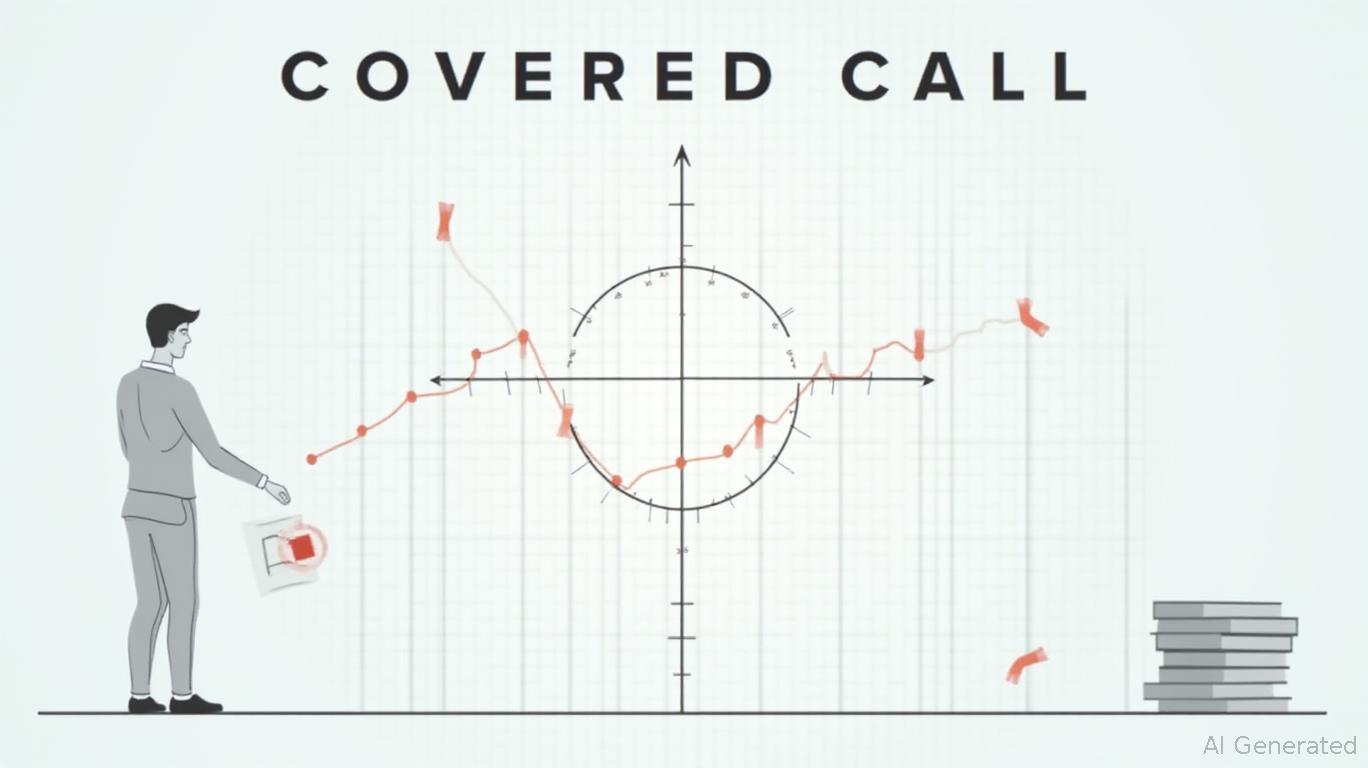Navigating Rising Rates and Volatility with High-Yield Covered Call ETFs
The Federal Reserve's relentless hike in interest rates, coupled with geopolitical tremors and market swings, has turned 2025 into a challenging year for income-focused investors. Traditional fixed-income assets like bonds are yielding meager returns, while equities face headwinds from rising borrowing costs. Enter covered call ETFs—a hybrid strategy that combines equity exposure with option premiums—to bridge this income gap. Among the top contenders are three ETFs: the Global X Nasdaq-100 Covered Call ETF (QYLD), the NEOS S&P 500 High Income ETF (SPYI), and the ProShares S&P 500 High Income ETF (ISPY). These funds offer compelling yields while tempering downside risks, but their suitability hinges on an investor's risk tolerance and market outlook.

QYLD: The Nasdaq-100 Income Engine
Strategy: QYLD tracks the Cboe Nasdaq-100 BuyWrite v2 Index, which involves holding Nasdaq-100 stocks while selling one-month at-the-money call options. This generates monthly income via option premiums while limiting downside volatility.
Yield & Performance:
- SEC 30-Day Yield: ~0.7% (unsubsidized).
- Distribution Yield: ~11.9% (based on 2024 data; 2025 figures pending).
- 2025 Performance: As of April, QYLD's YTD return was -6.31%, reflecting Nasdaq-100 headwinds from rising rates and tech sector underperformance.
Risks & Suitability:
- Tech Exposure: Nasdaq-100 stocks like Apple and Microsoft face growth pressures in a rate-sensitive environment.
- Capped Upside: Investors forgo gains above the call option strike price.
- Ideal For: Investors seeking Nasdaq-linked income with some volatility mitigation.
SPYI: Tax Efficiency with a Catch
Strategy: SPYI employs a call option strategy on the S&P 500, leveraging Section 1256 contracts for favorable 60/40 tax treatment (60% long-term, 40% short-term gains). It also uses tax-loss harvesting to optimize returns.
Yield & Performance:
- SEC 30-Day Yield: 0.78%.
- Distribution Yield: 12.48% (as of March 2025).
- 2025 Performance: YTD NAV was -2.85% as of March, but distributions remain robust.
Risks & Suitability:
- Return of Capital: ~96% of recent distributions were return of capital, eroding principal over time.
- Market Sensitivity: Underperformed the S&P 500 during volatility spikes.
- Ideal For: Tax-conscious investors willing to trade long-term growth for high monthly payouts.
ISPY: Volatility's Double-Edged Sword
Strategy: ISPY uses a daily covered call strategy on the S&P 500, selling call options to lock in premiums. Unlike SPYI, it avoids Section 1256 contracts but focuses purely on equity and option income.
Yield & Performance:
- SEC 30-Day Yield: 0.71%.
- Distribution Yield: 8.85% (as of June 2024).
- 2025 Performance: Struggled in April (-6.17% YTD) due to high volatility but rebounded in May as markets stabilized.
Risks & Suitability:
- Volatility Dependency: Performance inversely correlates with market turbulence (e.g., VIX spikes).
- Lower Yield: Less aggressive than SPYI but with less return of capital.
- Ideal For: Investors comfortable with short-term volatility swings for S&P-linked income.
Strategic Considerations for 2025 Portfolios
- Interest Rates: Rising rates benefit income-focused ETFs like these, but tech-heavy QYLD may lag if the Nasdaq-100 remains sluggish.
- Volatility: Monitor the VIX index. ISPY thrives in calm markets but falters during spikes (e.g., Moody's downgrade in May).
- Tax Planning: SPYI's Section 1256 benefits are offset by return of capital risks; consult a tax advisor.
Conclusion
Covered call ETFs are essential tools for 2025 investors seeking income amid rising rates and volatility. QYLD offers Nasdaq-linked growth with yield, SPYI provides tax efficiency at the cost of principal erosion, and ISPY balances S&P exposure with volatility sensitivity. While none eliminate risk, they offer structured income streams in a challenging environment. Proceed with eyes wide open: high yields come with trade-offs, and diversification across these strategies—or pairing them with defensive assets—can anchor portfolios through market storms.
In a year where “safe” is relative, these ETFs are far from a sure bet—but for income hunters willing to navigate their nuances, they're worth considering.

Comments
No comments yet